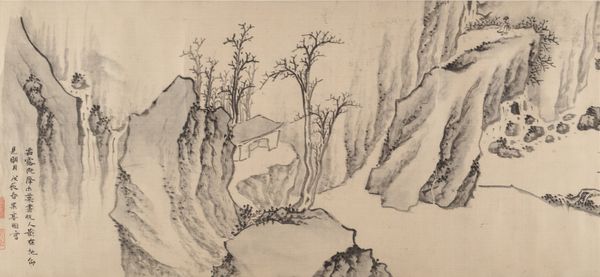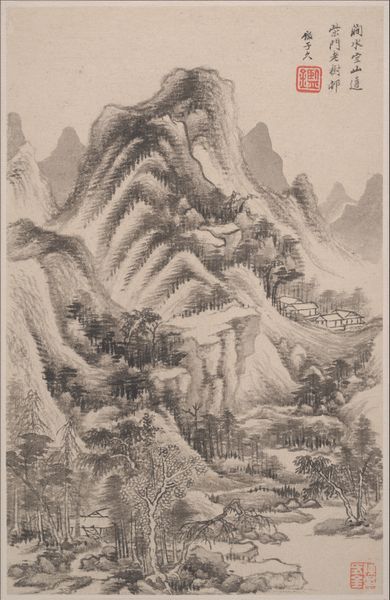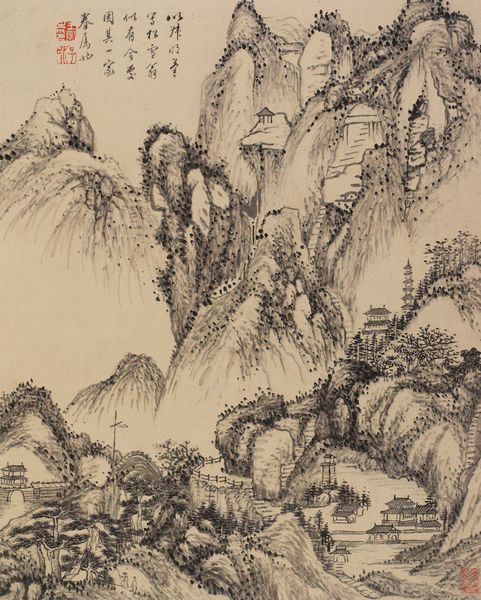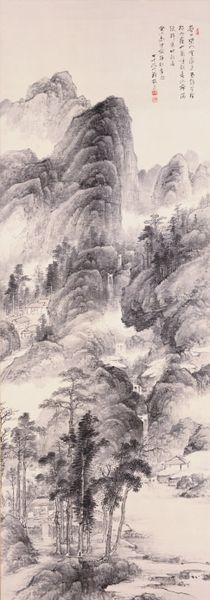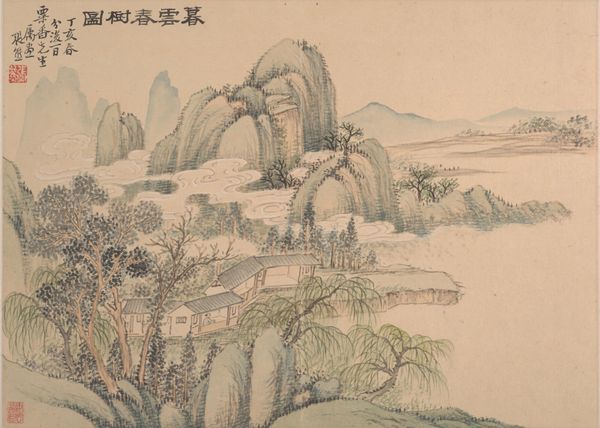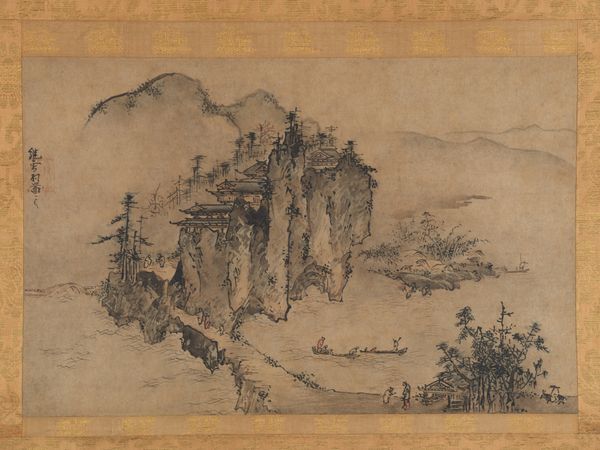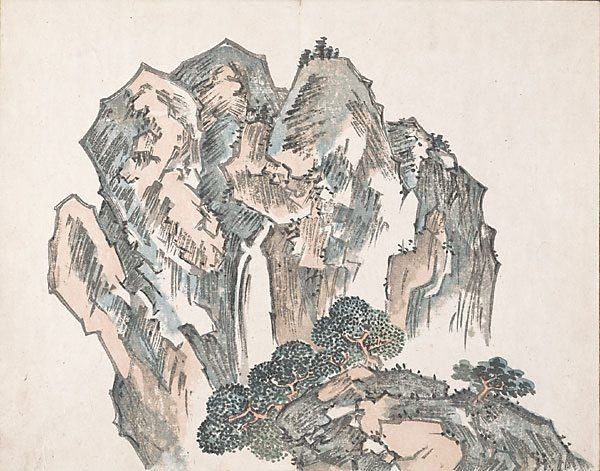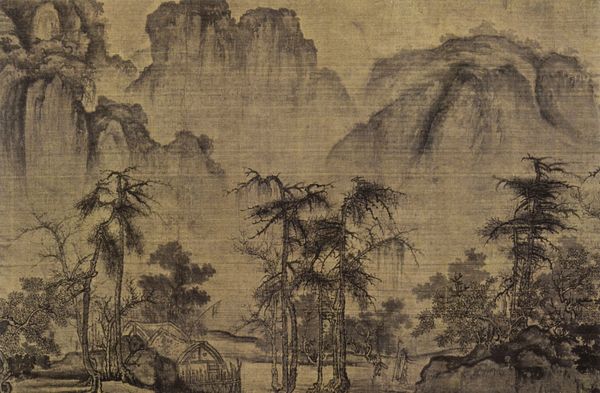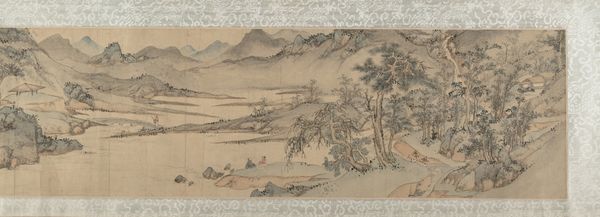
painting, paper, hanging-scroll, ink
#
painting
#
asian-art
#
landscape
#
charcoal drawing
#
paper
#
oil painting
#
hanging-scroll
#
ink
#
watercolor
#
calligraphy
Dimensions: 47 3/4 × 24 3/16 in. (121.29 × 61.44 cm) (image)92 1/4 × 32 3/4 in. (234.32 × 83.19 cm) (without roller)
Copyright: Public Domain
Curator: Looking at this hanging scroll, entitled “Landscape after Gao Kegong,” created in 1679 by Lü Huancheng, the muted colors and vertically-oriented composition create a serene effect. The artist employed ink and color on paper for this work. Editor: Serene is the perfect word. I see softness—everything feels muted, blended, almost dreamlike. It’s as though the landscape exists behind a veil. I'm also struck by the way the mountain seems to cradle the village nestled within. Curator: It’s quite striking. Lü was deliberately evoking Gao Kegong, a renowned Yuan dynasty painter known for his misty landscapes. Artists referencing past masters was a way of situating themselves within a lineage and making a statement about their own artistic aims and taste. By aligning himself with Gao, Lü also subtly critiques contemporary painting trends. Editor: The mist feels significant. Is it purely atmospheric, or could it be symbolic, perhaps veiling a deeper truth or a hidden world? Water is a powerful symbol. Notice how it's present as mist, river, implied rain perhaps? The way those elements converge speaks to something deeper. Curator: Indeed. Consider also the role of Confucianism, particularly during the Qing Dynasty, when this was created. Artists like Lü used landscape paintings as ways to express political sentiments indirectly and intellectual allegiances during a period of political volatility when openly criticizing the government could be very dangerous. Even the act of "copying" masters from previous dynasties might suggest a longing for a perceived golden age. Editor: So, these tranquil landscapes might also carry coded political weight. The “simple” imagery isn’t just decorative. Each tree, rock, and wisp of mist becomes a vessel for cultural and personal meaning, layering history onto nature. I can almost feel the artist’s longing for stability echoing through time. Curator: Exactly! And the placement of the scholar in the painting along a path speaks to something as well. Not just an incidental part of the landscape, the act of walking on a journey of knowledge is meant to evoke a scholarly, contemplative ideal. Editor: The image speaks to us in ways both seen and unseen, as you have noted. Every time we engage, new layers seem to emerge. Curator: Precisely! It's rewarding how context and symbol interweave.
Comments
minneapolisinstituteofart about 2 years ago
⋮
Tiny buildings and figures indicate the huge scale of the mountains in this painting. The peaks fade into distant mists, a technique called atmospheric perspective, adding to the imposing effect. Philosophers use many metaphors to explain the nature of the Dao, or “way,” of Daoism because it is difficult to grasp, and its essence is impossible to translate into any language. Water is the natural and physical element most closely resembling the Dao. Therefore, the concept of the Dao can be understood and appreciated by watching the flow of water, as figures in this painting are doing.
Join the conversation
Join millions of artists and users on Artera today and experience the ultimate creative platform.


